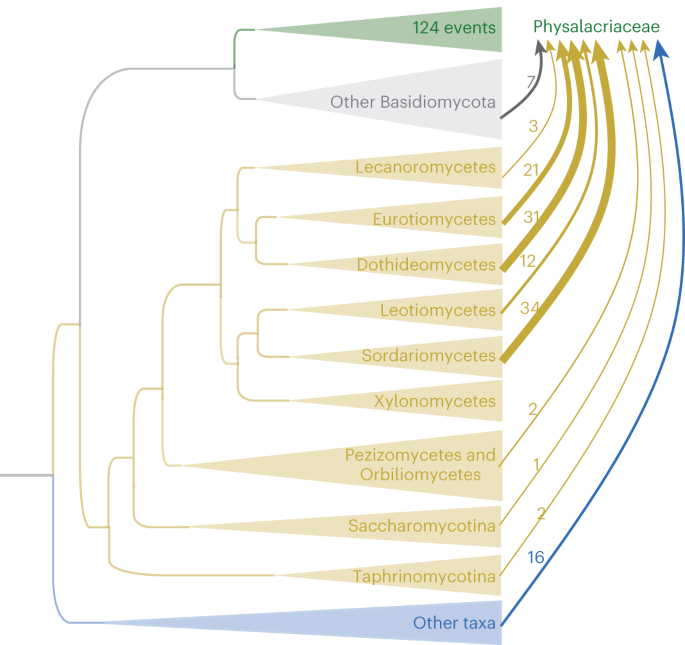- Select a language for the TTS:
- UK English Female
- UK English Male
- US English Female
- US English Male
- Australian Female
- Australian Male
- Language selected: (auto detect) - EN
Play all audios:
What makes for an effective teacher-preparation program? And how should these programs be evaluated? Officials in the field once tried to answer these questions through adopting a set of
rigorous standards—but a decade later, the debate is still far from settled. If anything, the twists and turns over the past 10 years, including a declining interest in the teaching
profession that has led to significant enrollment declines, have made it a thornier problem than ever. But leaders of the Council for the Accreditation of Educator Preparation, which
released those standards in August 2013, says those forces highlight why an official stamp of approval matters. “We had a rough start,” said CAEP President Christopher Koch, who has led the
organization since 2015. “We’ve had to, as an organization, do a lot of soul searching and reflection and continuous improvement ourselves over the years to get CAEP to what it is
today—which I think is a really effective organization that does a good job focusing on standards that are more necessary now for the profession than they’ve ever been.” The trend among
legislators to weaken teaching standards in response to enrollment trends is worrisome, he said—and something accreditation can backstop. “We once again see education preparation being
treated differently than other professions that would face shortages—you wouldn’t throw out standards for air-traffic controllers or nurses just to say we need bodies,” Koch said. “That’s
why I think CAEP is really important now more than ever, and that we’ve evolved to be a really helpful bellwether for states as they’re thinking about preparation and for providers who want
to stay cutting edge on continuous improvement, and retain [candidates], and gain enrollment.” Even so, national accreditation for educator-preparation programs is voluntary in most states,
and it can be a tough sell, in part due to the associated costs and the work required to meet the standards. A little more than 800 institutions are currently participating in the
process—less than half of the 2,200 preparation providers in the country. A COMPETITOR TO CAEP One continuing challenge: a lack of consensus in the field on what accreditation should even
look like. For more than a decade, teaching programs could choose between two national accrediting bodies with different approaches; they merged in 2010 in an attempt to unify a diffuse
field. CAEP was the result of the merger—it approved its inaugural set of standards on Aug. 29, 2013, but struggled to secure support from the field. Many teacher-preparation programs pushed
back on some of the new requirements, and in 2015, the American Association of Colleges for Teacher Education announced there was a “crisis of confidence” in the accreditor. CAEP ousted its
founding president shortly after. Seven years after the merger, the field was divided yet again as a new rival accreditor, the Association for Advancing Quality in Educator Preparation, was
formed, offering teacher-prep programs a choice in how they prove their effectiveness. The irony is not lost on teacher-educators. “When CAEP was introduced to the public, they positioned
themselves as the single voice of the profession,” said Elizabeth Stringer Keefe, the dean of graduate and professional studies at Stonehill College in Massachusetts who studies teacher
preparation. “The whole idea behind the merger was to strengthen teacher quality and to strengthen preparation and not be viewed as having multiple accrediting bodies that were … in conflict
with each other.” But the field is once again split between two approaches to accreditation: CAEP requires multiple measures of data to prove programs’ selectivity and effectiveness. AAQEP
doesn’t set specific benchmarks in its standards and favors a more inquiry-based approach. The differing philosophies echo back to those of the two groups that birthed CAEP. (AAQEP’s
president formerly served as the president of the Teacher Education Accreditation Council, one of the groups that merged to create CAEP.) “Now, 10 years later, we’re basically back to the
same place,” Stringer Keefe said. CAEP still makes up the lions’ share of the market, with 541 accredited providers, and about 90 more going through its process. But AAQEP, which started
issuing decisions in 2019, is rapidly picking up steam: It has 102 accredited providers, and about 90 more working toward meeting its standards. AAQEP President Mark LaCelle-Peterson said
the bulk of its members are not new to accreditation—they’re former CAEP members who decided to pursue a different approach. AN EVOLVING APPROACH TO ACCOUNTABILITY Since its launch, CAEP has
softened some of its requirements based on feedback from the field. The accreditor initially required programs’ incoming candidates to have an average 3.0 grade point average upon admission
and hold scores averaging in the top half of nationally normed achievement assessments, like the SATs. Some in the field had argued that such a requirement posed a barrier to Black and
Hispanic candidates, who tend to score lower than their white and Asian counterparts on standardized tests. After significant pushback, CAEP revised the standard in 2016 to say that
candidates have until graduation to meet the requirements. And in 2020, when CAEP released its second set of standards, the requirement that candidates score in the top half of those
achievement tests was gone. (CAEP still maintains the 3.0 GPA requirement.) Another controversial standard, on program impact, requires providers to provide all available data showing that
when their graduates lead their own classrooms, their K-12 students perform well, and that school districts are satisfied with the teachers that programs are producing. Some
teacher-educators have complained that it’s nearly impossible to obtain some of that information because their states don’t collect it. In the revised standards, CAEP removed references to
specific data points, such as value-added measures based on student test-score growth, because providers had mistakenly thought those were required. The data is still difficult to come by,
Koch acknowledged, but CAEP highlights how different providers from across the country have met the standard to show that it’s doable. “It does matter to check in with teachers after they’ve
been teaching for several months to see how they are doing, and do they feel like they have the skills and knowledge they need to do those jobs effectively,” he said. “That’s always made
sense.” Joel Hanel, the director of assessment, accountability, and accreditation at the University of Virginia’s school of education, which is accredited by CAEP, said the standard has
prompted UVA to strengthen its relationships with K-12 partners and ask them for data. > We once again see education preparation being treated differently > than other professions ...
You wouldn't throw out standards for > air-traffic controllers. “We have built a system at UVA that is very robust,” he said. “I think CAEP has helped us build that to some extent by
providing some structure and framework that we as an institution have the ability to use for multiple purposes.” Hanel added that collecting the data isn’t just about meeting the standard:
“How do we take these data and make sense of them and really try to improve what we’re doing?” Koch said he’s gotten positive feedback from providers on the new set of standards and that as
the accreditor has evolved, he no longer hears complaints that CAEP has a “top-down” or “compliance-focused” approach to meeting standards. “I think the process now is not overly onerous,”
Koch said. “We increasingly hear the value it has for providers in helping them think about and establish or refine a quality assurance system, which is really important. This has always
been about two goals: both accountability and continuous improvement, and getting the right balance of those so that it has meaning for our members and for states as well.” A QUESTION OF
CONTENT Yet some in the field question whether meeting the CAEP standards is really enough of an indication that institutions are preparing strong teachers who are classroom-ready on day
one. Ed Crowe, the founding chief executive officer of Teacher-Prep Inspection-US, said his team has reviewed about 300 teacher-preparation programs over the past decade, about 70 of which
were CAEP-accredited. There has been no consistent relationship between program quality and national accreditation, he said. (Crowe’s group is not an accreditor, but reviews programs for
states and organizations.) “It has not been a force for change in the way that people hoped,” he said. “I think it’s an unfulfilled promise, a missed opportunity to raise standards, to raise
quality, and for the field to really establish itself as a respected profession.” CAEP has a standard on content and pedagogical knowledge, which in part asks for evidence that
teacher-candidates know central concepts of their content areas. But the accreditor doesn’t evaluate the specifics of the program coursework or the faculty’s instruction. “I think they miss
something important by not looking closely at what’s happening inside the program the week [reviewers are] there,” Crowe said. For example, he said, the way that many programs prepare
candidates to teach reading is not aligned with the evidence base behind how children learn to read. But that’s not an area CAEP scrutinizes. Instead, CAEP’s philosophy is that “it’s more
important to look at the outcomes of what the teachers are doing and whether or not the students that those ... newly minted teachers are teaching are actually able to learn,” Koch said. He
pointed to the standard on program impact. Providers have to ensure that their graduates are effectively contributing to student learning—and feel prepared with the skills and knowledge to
teach reading and other content. “It doesn’t take us into the reading wars, for example, on this type of teaching or the other type. It looks instead at, can our kids read?” Koch said.
SHOULD PROGRAMS CHOOSE THEIR ACCREDITORS? Koch maintains that letting providers shop around for which accreditor they want to evaluate them is further damaging the teacher-preparation field.
“Having a single set of standards means everybody has to meet the same benchmark—there aren’t easier ways,” he said. CAEP is a “consequential accreditor,” he said, with dozens of providers
being put on probation or accredited with stipulations, and some having their accreditation denied or revoked. “People who have gone through both reviews still tell us AAQEP is far easier,
and you don’t have to worry about failing,” Koch said. Some of those providers that have failed to meet full accreditation by CAEP have gone on to be accredited by AAQEP. LaCelle-Peterson
said those providers made positive changes by the time they received accreditation from AAQEP. He disputes the idea that AAQEP’s process is significantly easier: “CAEP standards are
challenging in a way, but not necessarily in a way that’s related to quality,” he said. “They’re very rooted in the Race-to-the-Top era. … Our standards are more contemporary in the sense of
being focused on both quality assurance and engagement in context and meeting institutional mission.” A hallmark of AAQEP’s process, LaCelle-Peterson said, is the monthly cohort meetings.
Members going through accreditation are assigned to a small group of providers and meet via Zoom to share insights on how they’re meeting the standards. The process is optional, but about 90
percent of members participate in at least one meeting, he said. And even after they receive accreditation, some providers continue to meet with their cohorts, LaCelle-Peterson said. “One
of the problems in accreditation is it can be kind of a binge activity, where you do all this stuff every seven years, and then you say, ‘Oh good, I don’t have to think about that for five
years.’ And then you come back later and say, ‘Oh shoot, what were we supposed to be assessing?’” he said, adding that AAQEP is hoping to build more of a continuous inquiry system. > I
think they miss something important by not looking closely at > what’s happening inside the program. That cohort system was a driving factor in why the school of education at High Point
University in North Carolina switched accreditors. Amy Holcombe, the dean of the school of education, said the school went through CAEP’s pilot process of accreditation in 2016. But when it
came time for renewal this year, High Point “decided AAQEP was a better fit,” she said. “That community of practitioners was invaluable,” she said. “We learned so much from our colleagues.”
Holcombe added: “We know what it takes to develop effective educators. That does not change too much from accrediting agency to accrediting agency. … Where the variation comes in is the way
the organizations leverage the expertise of members.” And AAQEP “supports innovation in ways that CAEP does not,” she said, adding that CAEP “seems to be more about standardization of
practice.” Even so, Kimberly Paulsen, the CAEP coordinator for Vanderbilt University’s college of education and a CAEP reviewer for other institutions, feels the accreditor’s approach to
reviews has become more supportive over the years. “They are there to be the accrediting board, which means you have to follow standards, but they are also there to help,” she said. In
recent years, “they’ve given us many more resources on how to do it and do it well. They’re a partner.” WHAT’S AHEAD FOR ACCREDITATION The two accreditors will likely continue to battle for
market share for years to come, but they’re doing so during a difficult climate for teacher preparation, said Stringer Keefe of Stonehill College. Over the next decade, “I think that we will
see either a static number of institutions remaining accredited—some states simply require it—or we will see a waning number,” she said. “We’re in a little bit of a crisis in higher
education post-pandemic, particularly in teacher preparation where it’s been harder to convince early-career teachers to enter the profession. … There is a financial bottom line for
institutions, and they have to make decisions with their dollars and see how accreditation fits into that.” CAEP and AAQEP both charge members an annual fee that starts at more than $3,000
and is based on how many prospective teachers complete the program, as well as review costs. AAQEP charges $3,500 for a virtual site visit for initial accreditation and $11,000 for an
on-site review for full accreditation, in addition to any travel costs. CAEP charges $2,510 per reviewer and typically assigns each provider five reviewers. (CAEP’s site visits are virtual
this academic year, which reduces the amount providers pay in travel costs.) Meanwhile, Koch said CAEP is focused on growing internationally, as well as forging additional partnerships with
states. According to a CAEP spokesperson, eight states currently require their teacher-preparation programs to meet CAEP accreditation, while three have that requirement for public
universities only. Six states use the CAEP standards, but providers can choose between using CAEP or state reviewers to fulfill the requirement. “Providers don’t want to do things
twice—they’re practical, and if they’re not required to do national accreditation, ‘why bother?’ is often the thought,” Koch said. “If we can help states to understand why it’s important to
count what we do, that we can make what we do of value to them, I think that will really help overall in building the profession.” After all, while the teacher-preparation landscape has
changed significantly in the past decade, Koch said the value of accreditation remains the same: “By having standards, you help ensure people will be prepared so that they feel equipped to
stay in the profession, and that K-12 students’ needs are met.”




